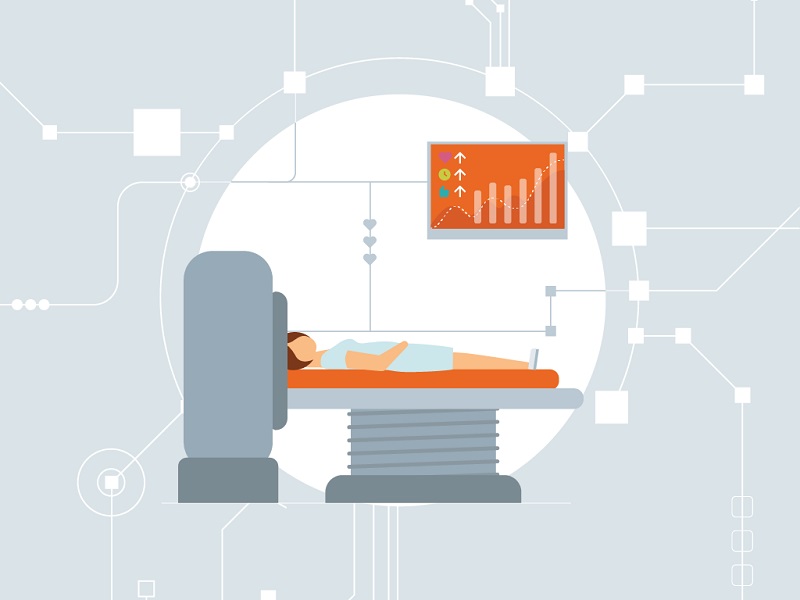The NHS is on a digital journey. In this article, Chris Wilkinson, head of sales for healthcare and public sector at Siemens Financial Services, identifies the three key investment areas between now and 2025 and the value they are already bringing the healthcare system
By 2030, it is anticipated that there will be over 21,000 centenarians in the UK, with one in five people aged 65 and over.
As life expectancy rises, time spent in poor health with multiple chronic health conditions also increases.
At the same time, the gap between the number of staff needed and that available is projected to reach almost 250,000 by 2030, leaving the existing workforce significantly overstretched.
Digital transformation is already playing a key role in bridging this widening gap between supply and demand – but with the healthcare landscape evolving so rapidly, where should healthcare providers invest first to get the most-rapid and effective outcomes?
Considering that the NHS deals with one million patients every 36 hours; it comes as no surprise that moving care out of hospitals and closer to people's homes through telemedicine has been identified as a priority investment area
With budget cuts being rife, and the possibilities of digitalisation being endless; our latest research draws on the views of healthcare experts from around the world to identify three key investment areas which are seen to bring the greatest and quickest value to healthcare systems in the next five years.
The results revealed the top enabling technologies to be (a) New generation (digitalised and/or mobile) diagnostics; (b) Remote access and communications platforms (Telemedicine); and (c) Smart, digitalised hospitals.
New generation diagnostics
Amid a shortage of radiologists, digitalisation is improving both the management of diagnostic capabilities as well as the performance of diagnostic equipment itself.
For instance, the NHS has rolled out a new Artificial Intelligence-driven health data programme which aims to improve the early detection and prevention of diseases such as cancer and dementia.
Using big data analytics of historical scan data, algorithms are built to automatically detect anomalous tissue and highlight these results to the radiographer – allowing faster and more-accurate diagnoses, and alleviating some of the pressure on clinicians.
Mobile diagnostics can also digitally link devices between different healthcare institutions, thereby maximising their usage rate while also improving access to diagnostics for more-remote communities.
The cost of investing in new-generation diagnostics, however, is significant - £1.17billion in the UK over the next five years.
Telemedicine
Telemedicine can help to improve access in both rural and urban settings, reducing the number of avoidable admissions to hospitals and missed appointments by connecting doctors and patients through e-consultations and healthcare apps.
If healthcare systems were to buy the technology required for digital transformation outright, this would tie up a high proportion of funds needed for urgent operating expenditure
Considering that the NHS deals with one million patients every 36 hours; it comes as no surprise that moving care out of hospitals and closer to people's homes through telemedicine has been identified as a priority investment area.
It is estimated that the UK will need to invest £1.4billion in telemedicine over the next five years.
Smart hospitals
Among the many applications of smart hospitals are digitalised asset tracking and predictive maintenance – which both have the potential to dramatically reduce delays and cancellations by ensuring that precious technology and facilities are available when they are needed.
Through better management of hospital resources, smart hospitals contribute to freeing up precious time for patient care.
The Royal Wolverhampton NHS Trust is the first hospital in the UK to put in place a pilot project which provides real-time monitoring of bed capacity, in some cases reducing surgical cancellations due to lack of beds by 60%.
Presently, the majority of UK hospitals are in HIMSS Stage 5 of the technology-enabled hospital scale, with 53 hospitals falling into that category, and where Stage 7 represents complete electronic health record (EHR) integration across all clinical areas.

New financial solutions are now required for healthcare institutions to keep up with the pace of digital transformation
For the UK to fully digitalise its hospitals, it will need will to invest an estimated £1.3 billion over the 2013-2019 five-year period.
Evidently, investing in these three areas alone will require considerable capital investment, which typically goes beyond the normal capital budgets in healthcare.
In today’s pressurised healthcare environment, many healthcare institutions are turning towards private-sector financing tools to acquire the necessary equipment
If healthcare systems were to buy the technology required for digital transformation outright, this would tie up a high proportion of funds needed for urgent operating expenditure.
In today’s pressurised healthcare environment, many healthcare institutions are therefore turning towards private-sector financing tools to acquire the necessary equipment.
Specialist financiers offer a wide range of financing tools designed to achieve digital transformation, for instance, by allowing healthcare bodies to pay to use the new-generation technology rather than having to buy it outright in a one-off capital sum.
Using their knowledge of the healthcare sector and its underlying technologies, they can structure financing arrangements that accommodate equipment, software, integration costs, maintenance, service, training, installation, facilities, and even expert personnel all into a single monthly payment structure.
As demand for healthcare increases, new financial solutions are required for healthcare institutions to keep up with the pace of digital transformation and to provide patients with improved healthcare outcomes without using precious capital.
Through smart finance solutions, healthcare systems may begin to invest in the top three areas of digitalisation and reap the benefits of digitalisation without ‘freezing’ unacceptable levels of funding.




